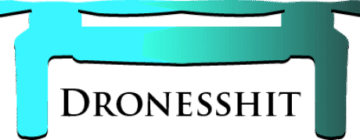
Drones are increasingly being used for insurance inspections due to their ability to quickly and efficiently gather visual data from difficult-to-reach locations. They offer several advantages over traditional inspection methods, such as improved safety, cost-effectiveness, and enhanced data collection capabilities. Here are some key points regarding the use of drones for insurance inspections:
Risk Assessment
Table of Contents
Drones equipped with high-resolution cameras and sensors can capture detailed imagery of properties, including rooftops, facades, and other areas that may be prone to damage or require inspection. This helps insurance companies assess risks accurately and determine appropriate coverage and premiums.
Damage Assessment
After an incident such as a storm, fire, or natural disaster, insurance companies need to assess the extent of damage to property. Drones can provide aerial views of the affected area, allowing insurers to evaluate the damage quickly and accurately. This helps streamline the claims process and enables prompt settlement for policyholders.
Safety And Accessibility
Inspecting certain areas, such as roofs, can be challenging and hazardous for human inspectors. Drones can access difficult-to-reach locations without endangering human lives. They can navigate tight spaces, fly at various altitudes, and capture images and videos of areas that may otherwise be inaccessible or dangerous.
Time And Cost Efficiency
Using drones for insurance inspections can significantly reduce the time and cost associated with traditional inspection methods. Drones can cover large areas quickly, reducing the need for manual inspections or deploying other resources. Additionally, the data collected by drones can be analyzed remotely, saving time and resources for insurance companies.
Data Collection And Analysis
Drones can capture high-resolution imagery, thermal imaging, and other data that can aid in the assessment of risks and damages. This data can be used for analysis, documentation, and comparison over time, providing valuable insights for insurers.
Enhanced Accuracy
Drones equipped with advanced sensors and imaging technology can capture precise measurements and detailed visuals. This helps insurers make more accurate assessments, detect hidden damages, and identify potential risks that may have been overlooked through manual inspections.
However, it’s important to note that the use of drones for insurance inspections may be subject to regulations and guidelines imposed by aviation authorities and local governments. Insurance companies should ensure compliance with relevant laws and obtain necessary permits or licenses for operating drones.
Overall, drones offer insurance companies a valuable tool for conducting inspections more efficiently, improving risk assessment, and expediting the claims process while ensuring safety and accuracy.
Are Drones Helpful In Insurance Inspection?
Yes, drones are incredibly helpful in insurance inspections. They offer numerous advantages over traditional inspection methods, making them a valuable tool for insurance companies. Here are some key ways in which drones prove to be helpful:
Faster And More Efficient Inspections
Drones can quickly capture visual data from difficult-to-reach locations, covering large areas in a fraction of the time it would take for manual inspections. This efficiency allows insurance companies to assess risks and process claims more promptly.
Enhanced Safety
Inspecting certain areas, such as rooftops or high-rise buildings, can be dangerous for human inspectors. By using drones, insurers can avoid putting individuals at risk by remotely capturing images and videos of inaccessible or hazardous locations.
Detailed And Accurate Data Collection
Drones equipped with high-resolution cameras and sensors can capture precise imagery and collect data that helps insurance companies accurately assess risks and damages. This data includes aerial views, detailed photographs, thermal imaging, and other specialized information that provides insurers with a comprehensive understanding of a property’s condition.
Cost-Effectiveness
The use of drones for insurance inspections can significantly reduce costs compared to traditional inspection methods. Drones eliminate the need for manual labor, specialized equipment, and time-consuming processes, leading to cost savings for insurance companies.
Improved Risk Assessment
Drones can provide insurers with a comprehensive view of a property, allowing them to identify potential risks or vulnerabilities that may have been missed during manual inspections. This information helps insurers make informed decisions about coverage, premiums, and risk mitigation strategies.
Streamlined Claims Process
After an incident or damage occurs, drones can capture detailed imagery that facilitates the claims process. Insurers can use this data to assess the extent of damage, verify claims, and expedite the settlement process for policyholders.
Remote Monitoring And Documentation
Drones enable insurers to monitor properties remotely and collect data over time. This longitudinal data collection helps track changes, identify trends, and detect issues that may affect policy coverage.
While drones offer significant benefits in insurance inspections, it’s important to note that their usage may be subject to regulations and guidelines imposed by aviation authorities and local governments. Compliance with these regulations is essential for insurance companies to operate drones legally and responsibly.
Drones are a valuable asset for insurance inspections, providing speed, efficiency, safety, and accuracy, benefiting insurers and policyholders.


2 thoughts on “Drones For Insurance Inspections”
Comments are closed.